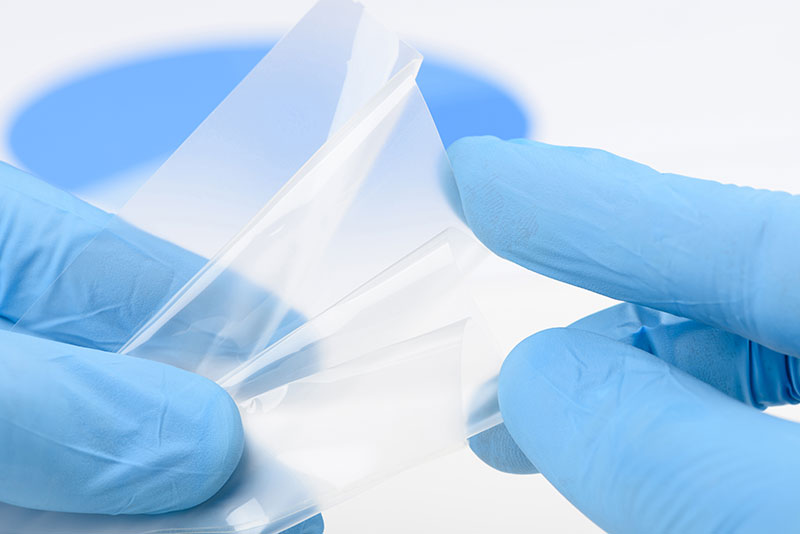In recent years, biodegradable polymers derived from renewable resources, namely biopolymers, have been developed.
Although cellulose has attractive properties for food packaging applications, its treatment by acid hydrolysis digests the amorphous domains, producing nanocellulose or highly crystalline cellulose nanocrystals. These nanocrystals exhibit numerous properties such as biocompatibility, large specific surface area, a high elastic modulus, high thermal stability and excellent optical transparency, which have been exploited to improve the properties of other biopolymer matrices, such as poly(lactic acid) (PLA), polyhydroxyalkanoates (PHA), polyisoprene and pea starch. In addition to their use as nano-fillers, the same cellulose nanocrystals can be used to produce high-barrier films.
With our technology, biomass is valorised as a natural source of cellulose fractions and nanocrystals extracted by acid hydrolysis, exploring the possibility of suppressing the processing phases of the purification process. Aqueous suspensions from different fractions and nanocrystals were used to generate films and their structural and functional properties were characterized to select the most promising materials for food packaging applications, minimizing processing steps to obtain more environmentally friendly and economically sustainable materials. . Reducing purification steps not only decreases production costs and environmental impact, but also produces new high-performance cellulose-based biopolymer films capable of replacing petroleum-based polymers in food packaging. Our process allows us to produce nanocellulose for the production of bioplastics with a yield of 30% and with more advanced processing 14% of pure nanocellulose as a filler for plastics.
Our procedure was born with the idea of applying hydrodynamic cavitation for the production of nano and micro cellulose to be used as a food thickener or for the production of bioplastics.
By timing the reaction times it is possible to obtain a pure nanocellulose either with lignin residues or with lignin and lipid residues, this gives different characteristics to the plastic film, making it more or less resistant or more or less pressable to oxygen, giving it various applications for packaging or food packaging.
Our procedure is very simple, it avoids steps such as the Soxhlet treatment, to valorise the waste biomass. Cellulosic films are produced by dispersing cellulosic fractions or cellulosic nanocrystals in water. The aqueous suspensions are filtered and the solid fraction remaining in the filter is used for the production of films, using a machinery commonly used in the sector.
Our technology significantly improves the mechanical and barrier properties of the films obtained from the fractions, while the extracted nanocrystals allow producing films with significantly improved properties, outperforming most reference biopolymers. Lipids initially present in the fractions with light treatment, are not completely digested by the hydrolysis treatment, having a positive impact on the water vapor permeability of the films (up to 63% drop), although it has a negative impact on oxygen permeability (increased 20-30 times). On the contrary, some hemicelluloses present in the less purified fractions, strongly interacting with cellulose, remained in the extracted nanocrystals leading to improved mechanical properties (45% higher tensile strength and 2-fold increase in elongation at break), but the barrier to water it is more effective (permeability up to 70% more than pure cellulose nanocrystals) thanks to its hydrophilic character.
















